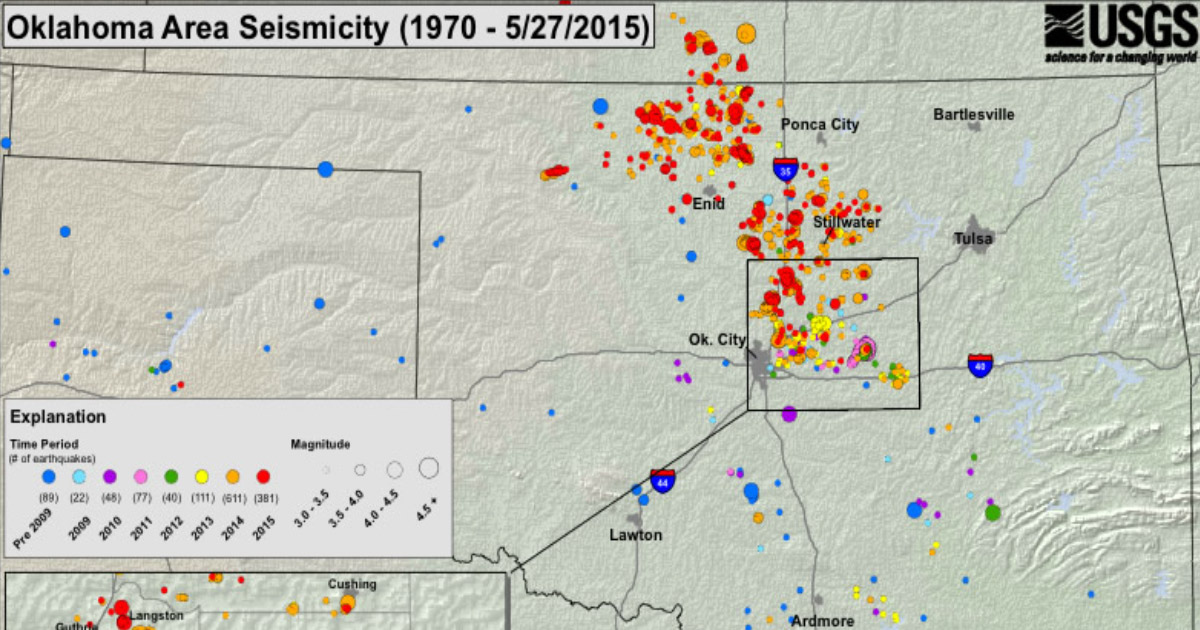Virtual Resource Room Navigation
Statutes and Regulations
This section contains materials representing various statutes and regulations that have been enacted or promulgated by the federal and state governments. While the Center makes every effort to update and provide current resources, be aware that statutory and regulatory language is subject to change. As a result, the Center offers no warranty or other guarantee regarding the timeliness or accuracy of the information presented.
Federal Statutes and Regulations
Although no federal law directly addresses the risks of induced seismicity events, the Safe Drinking Water Act governs waste fluid disposal through Underground Injection Control (UIC) regulations. The following statute and regulations, however, are designed to ensure drinking water protection, not to mitigate risks of induced seismicity:
The Safe Drinking Water Act (as amended through P.L. 104-182, Aug. 6, 1996) (42 U.S.C. §§ 300f et seq.)
Underground Injection Control Regulations:
40 CFR Part 144 – Underground Injection Control Program
40 CFR Part 145 State UIC Program Requirements
40 CFR Part 146 Underground Injection Control Program: Criteria and Standards
40 CFR Part 147 State, Tribal, and EPA-Administered Underground Injection Control Programs
40 CFR Part 148 Hazardous Waste Injection Restrictions
State Statutes and Regulations
Arkansas
Arkansas Oil and Gas Commission (AOGC) General Rules and Regulations relating to Class II Injection Wells (as of Jun. 16, 2019) (these rules and regulations do not specifically address induced seismicity risks)
Rule H-1 – Class II Disposal and Class II Commercial Disposal Well Permit Application Procedures (Rule H-1 allows the Arkansas Oil and Gas Commission (AOGC) to identify and designate appropriate areas for injection disposal activities and thus implement moratorium if deemed necessary. This aims to protect drinking water sources and promote the conservation of state oil and gas resources)
California
UIC Program Requirements:
Title 14 (CCR) Div. 2, Chap. 4, Subchap. 1, Art. 3. Requirements
Colorado
Colorado Code of Regulations (2 CCR 404-1) regulates underground injection wells.
Illinois
62 Ill. Adm. Code Part 245 Hydraulic Fracturing Regulatory Act
62 Ill. Adm. Code Part 240 The Illinois Oil and Gas Act
Kansas
Kansas Administrative Regulation (K.A.R.) 28-46. Underground Injection Control Regulations
Kansas Seismic Action Plan, Kansas Department of Health and Environment (amended Jan. 21, 2015)
Ohio
The Preliminary Report on the Northstar 1 Class II Injection Well and the Seismic Event in the Youngstown, Ohio Area (Mar. 2012) from the Ohio Department of Natural Resources provides findings regarding the 2011 earthquakes that occurred near the Youngstown area and presents an overview of the deep injection well forthcoming reforms;
On July 10, 2012, former Governor John Kasich signed Executive Order 2012-09K as an emergency amendment of Ohio Administrative Code (OAC) Rules 1501:9-3-06 and 1501:9-3-07 to prevent future induced seismicity from occurring associated with Class II injection wells;
Deep injection wells and produced water in Ohio are governed by the following regulations:
Ohio Administrative Code (OAC) 1501:9-3: Saltwater Operation
Ohio Administrative Code (OAC) 1501:9-5 Enhanced Recovery Projects
Ohio Administrative Code (OAC) 1509: Division of Oil and Gas Resources Management – Oil and Gas
Oklahoma
Underground Injection Control in Oklahoma is governed by the following regulations:
Oklahoma Adm. Code (OAC) 252:652 Underground Injection Control
Oklahoma Adm. Code (OAC) 165:10 Oil and Gas Conservation
In addition, the Oklahoma Corporation Commission provides for earthquake action plans available at the following website.
Texas
In response to the risks of induced seismicity, the Texas Railroad Commission promulgated the following regulations that became effective on Nov. 17, 2014:
16 Tex. Admin. Code § 3.9 (Statewide Rule 9) for disposal into formations that are non-productive of oil, gas, or geothermal resources;
16 Tex. Admin. Code § 3.46 (Statewide Rule 46) for injection or disposal into formations that are productive of oil, gas, or geothermal resources.


